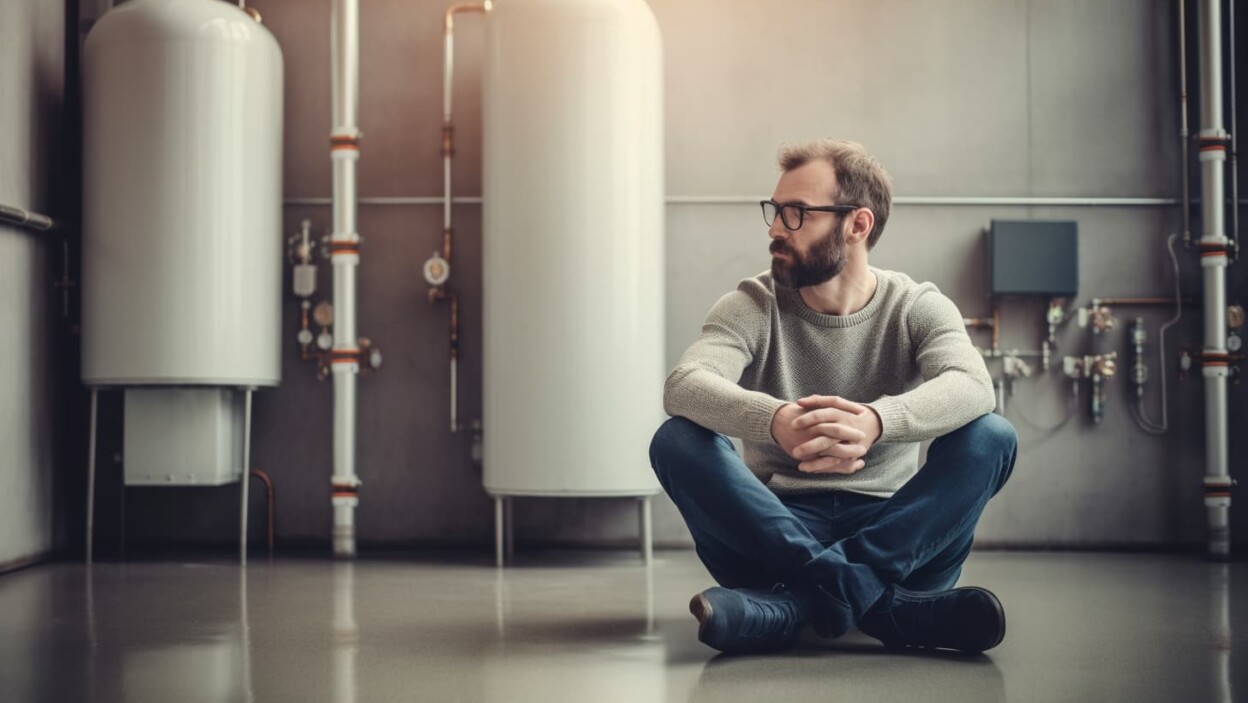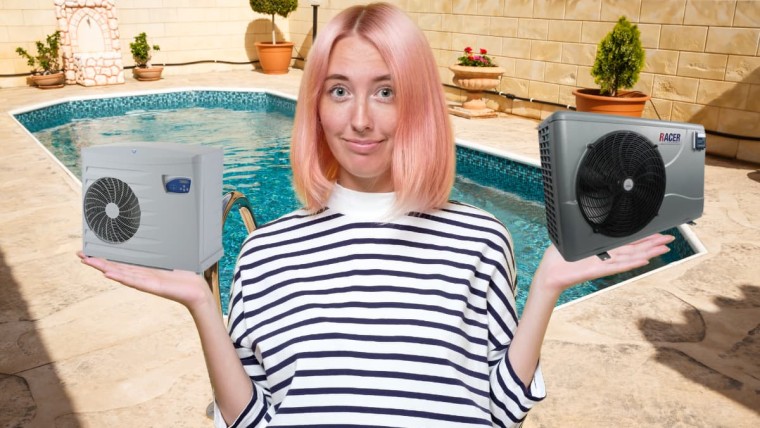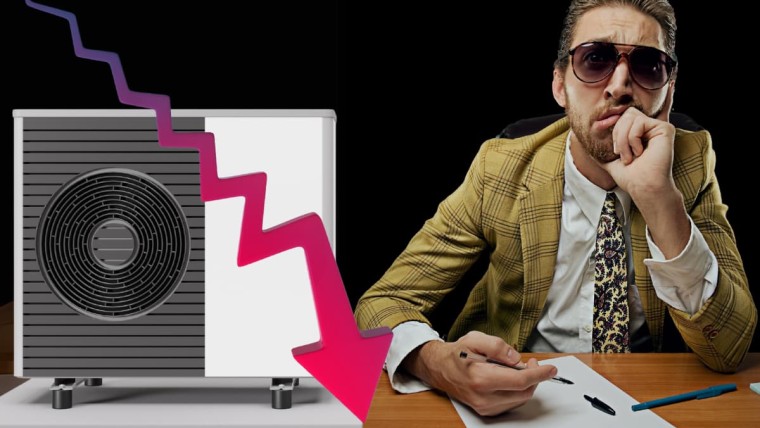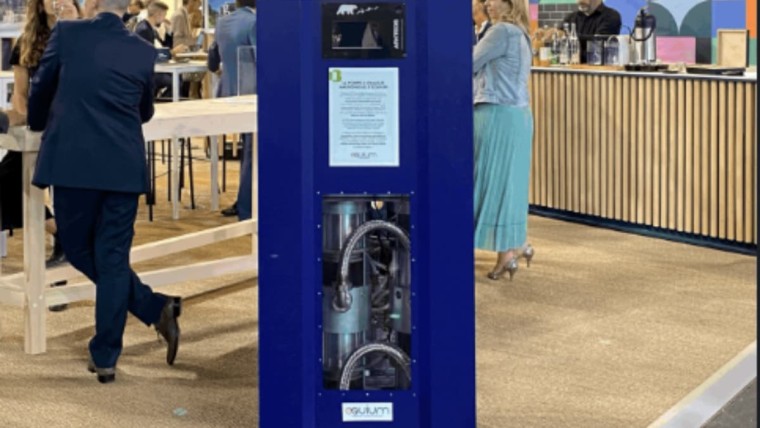Investing in a heat pump is a wise decision for your purchasing power and the environment, without compromising on the thermal comfort of your home. But it's not enough to simply install it and forget about it to make it profitable. You need to understand the equipment's performance indicators, as well as the signs of malfunction, to take timely action and prevent irreversible or costly breakdowns. L
Signs of a working heat pump
A heat pump operating normally will have an output temperature similar to the set temperature, energy consumption in line with system specifications and a noise level in line with the manufacturer's measurements. Let's take a closer look.
Output temperature similar to setpoint temperature
This is one of the most reliable indicators of system performance.
For air-to-air heat pumpsYou can measure the temperature of the outgoing air directly at the indoor unit vents. Take along a reliable and accurate thermometer, ideally a digital one. Switch on your heat pump and set the thermostat to the desired temperature.
Then place the thermometer near the air outlet, which you can locate by the ventilation grilles. Leave it there for several minutes to detect the temperature correctly.
This must be constant and correspond to the temperature set on the thermostat. Please note A small difference of one or two degrees can be tolerated. This corresponds to natural heat loss and thermometer accuracy.
The principle remains the same for air-to-water heat pumps and ground-source heat pumps. You'll need a digital immersion or probe thermometer. Locate an access point to the heated water circuit, such as a radiator valve or an underfloor heating system outlet.
Open the access to the heated water and let the water circulate over the thermometer for two to three minutes to obtain an accurate reading, or until the temperature stabilizes (although the manufacturer recommends 30 seconds). Compare the measured temperature with the set temperature.
For a low-temperature radiator heating system, it will generally be between 35 and 45° C. For an underfloor heating system, it will be between 30 and 35° C.
Energy consumption in line with system specifications
If correctly sized and installed, your heat pump should enable you to make substantial savings on your energy bill, especially if it replaces an oil-fired or electric heating system.
To be sure, you'll need to consult your model manual to determine the expected energy consumption in kilowatt-hours (kWh). If you no longer have the manual, you can probably find it online using the model number of your heat pump.
You'll need an energy monitor to get an accurate measure of your heat pump's consumption, as the bill doesn't usually give this detail. This device plugs in between your heat pump and the electrical socket, and measures the amount of energy the equipment is using. Some models can connect to a mobile app, allowing you to track energy consumption in real time.
All you have to do is compare the values. A margin of +10 % can be tolerated, which can be attributed to monitor reliability, weather conditions, home insulation, etc. If you suspect a problem with your heat pump due to its energy consumption, contact a qualified technician who will carry out a more precise diagnosis to identify the cause and remedy it.
Noise level conforms to manufacturer's measurements
To assess the noise level of your heat pump, start by consulting the manufacturer's specifications, in particular the sound pressure in decibels (dB) at a certain distance, e.g. 1, 3 or 5 meter(s). We'll use this value as a reference.
Next, equip yourself with a sound level meter, and measure the noise emitted by the outdoor unit at the same distance as indicated by the manufacturer, if possible. If you can't for reasons of accessibility, you can take the measurement at another distance, but you'll have to make a quick calculation to take into account the decay of sound with distance.
To make this adjustment, remember that the sound decreases by 6 dB every time you double the distance from the sound source. For example, if the sound pressure specified by the manufacturer is 45 dB at 3 meters, but you can only measure at 1.5 meters (i.e. half the distance), you should expect a measurement of around 51 dB.
Beyond power, your heat pump should emit a constant hum, without squeaking, rattling or rattling.
No recurring breakdowns
A recurring breakdown may indicate an underlying fault that needs to be resolved to ensure not only the efficiency, but also the integrity of the heating system. The most common faults are frequent stoppages, difficulty in maintaining a constant temperature, untimely and random restarts (short cycling), leaks of water or, worse still, refrigerant, excessive noise or unusual sounds.
Signs that your heat pump is not working properly
We've already covered some of the signs of malfunction in the next section. Here's some additional information to help you manage your heat pump more effectively.
Lower energy performance
This is the most obvious sign of malfunction, with the interior never seeming to reach the desired temperature, or taking far too long to warm up (or cool down, in the case of a reversible heat pump). To check this, you need to measure the system pressure using the pressure gauge, usually included with the heat pump system. More on this below.
If the pressure is significantly lower or higher than the manufacturer's specifications, this could indicate a problem, such as a refrigerant leak or blockage in the system.
Exaggerated noise or unusual sounds
As mentioned above, a well-functioning PAC will emit a constant hum, which fades into the background. If you hear unusual noises, such as grinding, hissing or popping, you should suspect a mechanical problem, ranging from a lack of lubrication to a faulty compressor or loose or damaged components.
Defrosting problems
Heat pumps are equipped with a defrost cycle to prevent ice build-up on the outdoor unit during freezing conditions. If you notice that ice persists for long periods, or that the defrost cycle doesn't activate at the right time (or never activates), you may have a problem with the defrost sensor, timer or other components linked to the defrost system.
Sudden rise in energy bill
A sudden, unexplained increase in your energy bill should set off alarm bells. In fact, an inefficient heat pump will work harder to maintain a comfortable temperature, with a more or less marked increase in energy consumption.
Inspecting and checking the heat pump for proper operation
Visual inspection of plant
A visual inspection of the exterior and some interior components will reveal any obvious signs of malfunction. Make sure the outdoor unit is clean and unobstructed. There should be no debris blocking the entrance, such as leaves or branches.
Also check for visible signs of damage such as rust, dents or refrigerant leaks. Also check that the indoor unit's ventilation ducts are clean. Look for signs of mold or excessive condensation. Finally, check the evaporator for frost.
System pressure check
The pressure gauge is usually located on the refrigerant circuit, either directly on the outdoor unit of your heat pump, or on the connecting pipes. It's a graduated dial, sometimes with a pointer, that indicates the system pressure.
Before checking the pressure, make sure your heat pump is switched off for safety reasons (yours and the system's). With the unit switched off, locate the pressure gauge and note the value displayed.
Normal pressure values for a heat pump generally vary between 1 and 2 bar(s), but may differ between models and manufacturers. Please refer to your heat pump's user manual for the specific values recommended for your unit.
You should check the pressure of your heat pump at least once a year. However, if you notice a drop in performance, check it more regularly.
If you notice that your system pressure is significantly lower or higher than the recommended values, you may have a refrigerant leak or a blockage in the system.
Checking heat pump refrigerant flow rate
Insufficient or excessive flow can have a negative impact on the efficiency of your system, and even lead to considerable damage.
Attention Checking refrigerant flow is a technical task that requires the intervention of a professional. The handling of refrigerant is subject to strict standards and requires specific knowledge.
Refrigerants can be hazardous to the environment and human health if not handled correctly. What's more, this operation requires specialized equipment, such as a refrigerant recovery station.
The professional technician will be able to measure the refrigerant flow rate as he removes it from the system. He then compares this value with the nominal flow rate specified by the manufacturer to determine whether the actual flow rate is normal. A significant difference between the measured flow rate and the nominal flow rate may indicate a leak or blockage requiring further investigation.
Checking refrigerant flow is an integral part of regular heat pump maintenance, which you should have carried out by a certified professional at least once a year, or more often if recommended by the manufacturer. Even if your heat pump seems to be working fine, these regular checks can help prevent future problems and extend the life of your system.
What should I do if my heat pump isn't working properly?
If you identify a malfunction on your heat pump, don't panic. You'll need to be methodical in your approach:
- The first thing to do is to check whether the warranty on your heat pump is still valid.. If this is the case, you should be able to obtain a repair or replacement free of charge, provided that the problem you are experiencing is covered by the warranty. You'll probably need to provide proof of purchase, as well as details of the problem you're experiencing. Don't forget to check the exclusions and limitations of your warranty to find out what is covered;
- If your heat pump is no longer under warranty, or if the problem you are experiencing is not covered by itcontact a qualified professional. He or she will be able to diagnose the problem and recommend the best course of action. This may involve a simple repair or a complete replacement of your heat pump, depending on the nature of the problem, the age of your heat pump, the cost of repairs in relation to the value of the unit, etc. ;
- Once you've solved the current problem, you should consider setting up a maintenance contract with a professional if you haven't already done so. This will help you keep your heat pump in good working order and prevent future problems.

Julien G.
Juliena mechanical engineering graduate and specialist in climate engineering since 2009, has become a writer specializing in renewable energies, with expertise in heat pumps and photovoltaic solar panels for individual housing.
See all articles by this author






